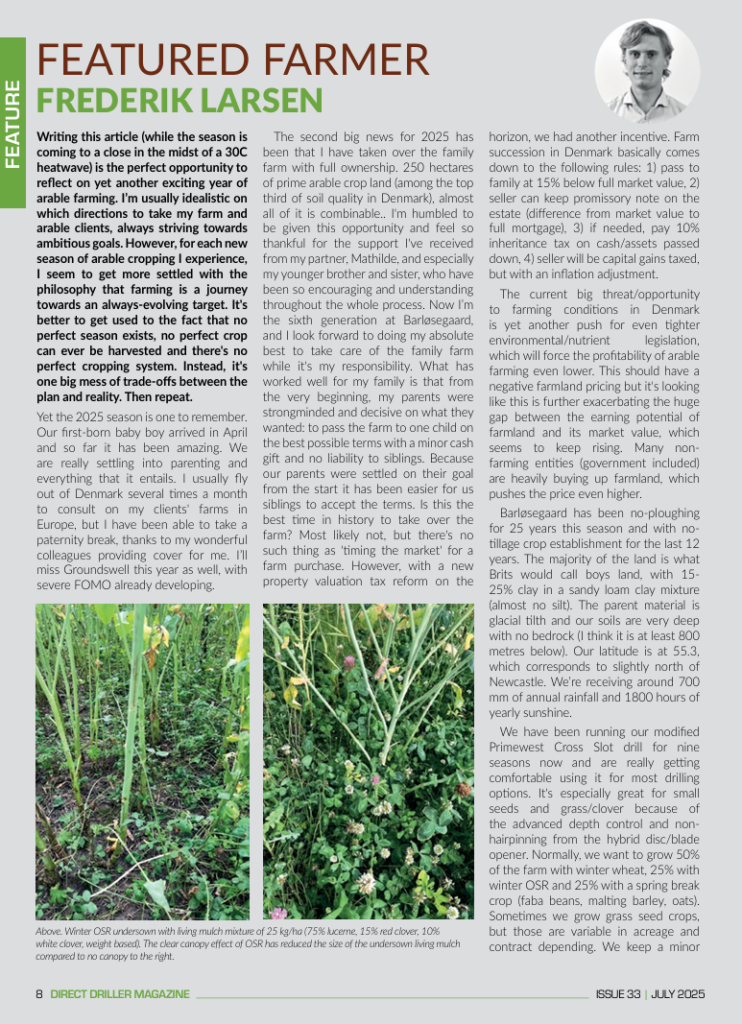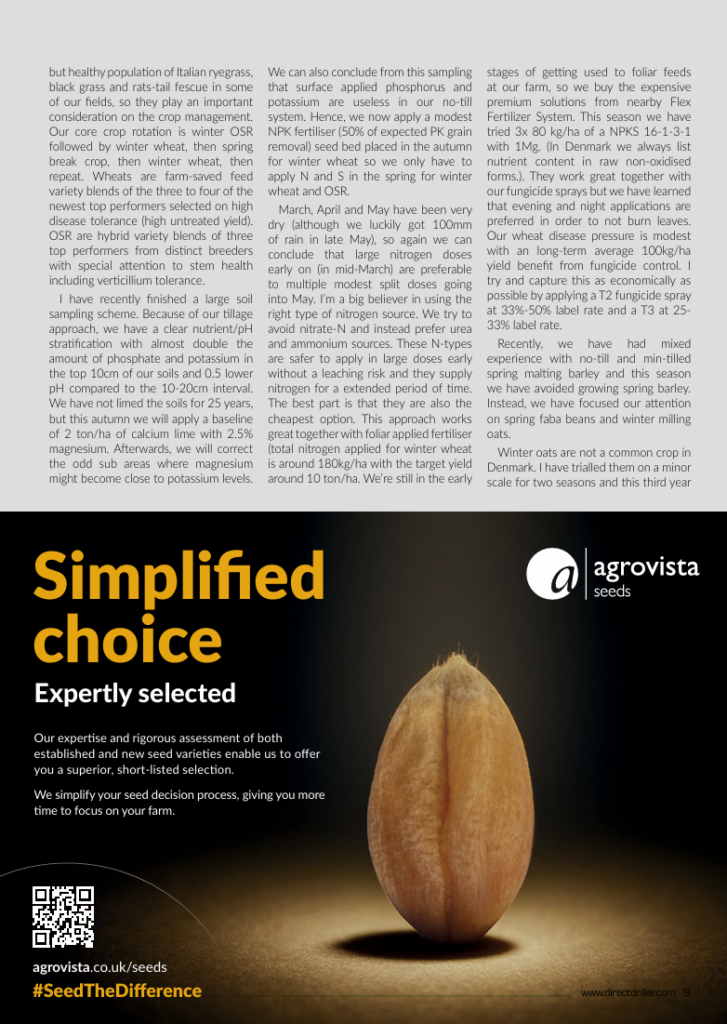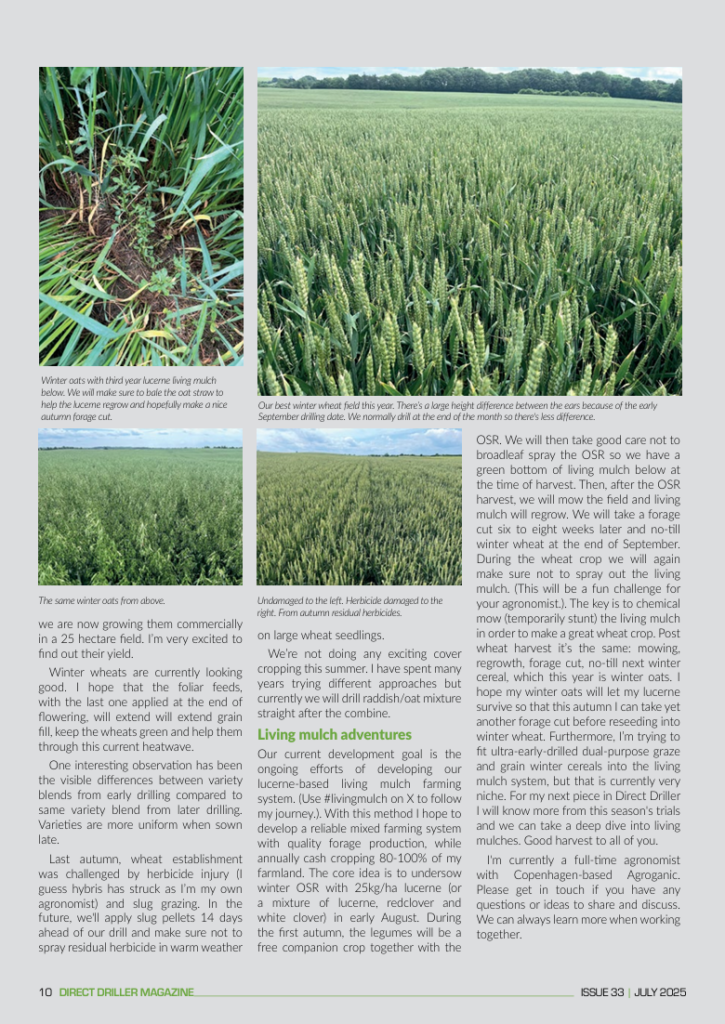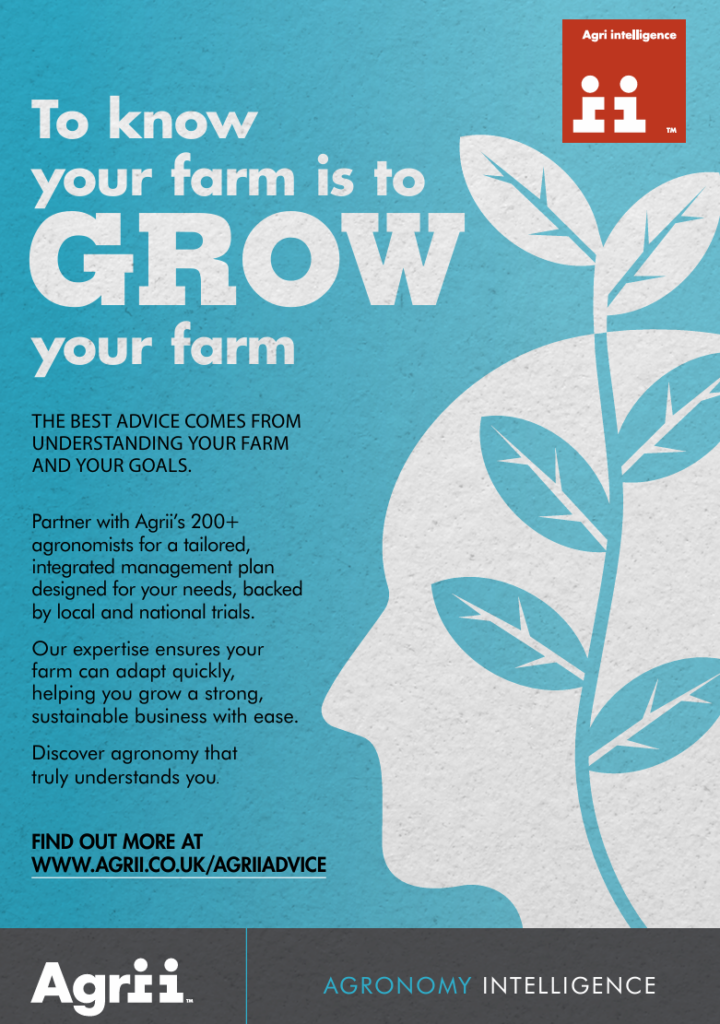Writing this article (while the season is coming to a close in the midst of a 30C heatwave) is the perfect opportunity to reflect on yet another exciting year of arable farming. I’m usually idealistic on which directions to take my farm and arable clients, always striving towards ambitious goals. However, for each new season of arable cropping I experience, I seem to get more settled with the philosophy that farming is a journey towards an always-evolving target. It’s better to get used to the fact that no perfect season exists, no perfect crop can ever be harvested and there’s no perfect cropping system. Instead, it’s one big mess of trade-offs between the plan and reality. Then repeat.
Yet the 2025 season is one to remember. Our first-born baby boy arrived in April and so far it has been amazing. We are really settling into parenting and everything that it entails. I usually fly out of Denmark several times a month to consult on my clients’ farms in Europe, but I have been able to take a paternity break, thanks to my wonderful colleagues providing cover for me. I’ll miss Groundswell this year as well, with severe FOMO already developing.
The second big news for 2025 has been that I have taken over the family farm with full ownership. 250 hectares of prime arable crop land (among the top third of soil quality in Denmark), almost all of it is combinable.. I’m humbled to be given this opportunity and feel so thankful for the support I’ve received from my partner, Mathilde, and especially my younger brother and sister, who have been so encouraging and understanding throughout the whole process. Now I’m the sixth generation at Barløsegaard, and I look forward to doing my absolute best to take care of the family farm while it’s my responsibility. What has worked well for my family is that from the very beginning, my parents were strongminded and decisive on what they wanted: to pass the farm to one child on the best possible terms with a minor cash gift and no liability to siblings. Because our parents were settled on their goal from the start it has been easier for us siblings to accept the terms. Is this the best time in history to take over the farm? Most likely not, but there’s no such thing as ‘timing the market’ for a farm purchase. However, with a new property valuation tax reform on the horizon, we had another incentive. Farm succession in Denmark basically comes down to the following rules: 1) pass to family at 15% below full market value, 2) seller can keep promissory note on the estate (difference from market value to full mortgage), 3) if needed, pay 10% inheritance tax on cash/assets passed down, 4) seller will be capital gains taxed, but with an inflation adjustment.
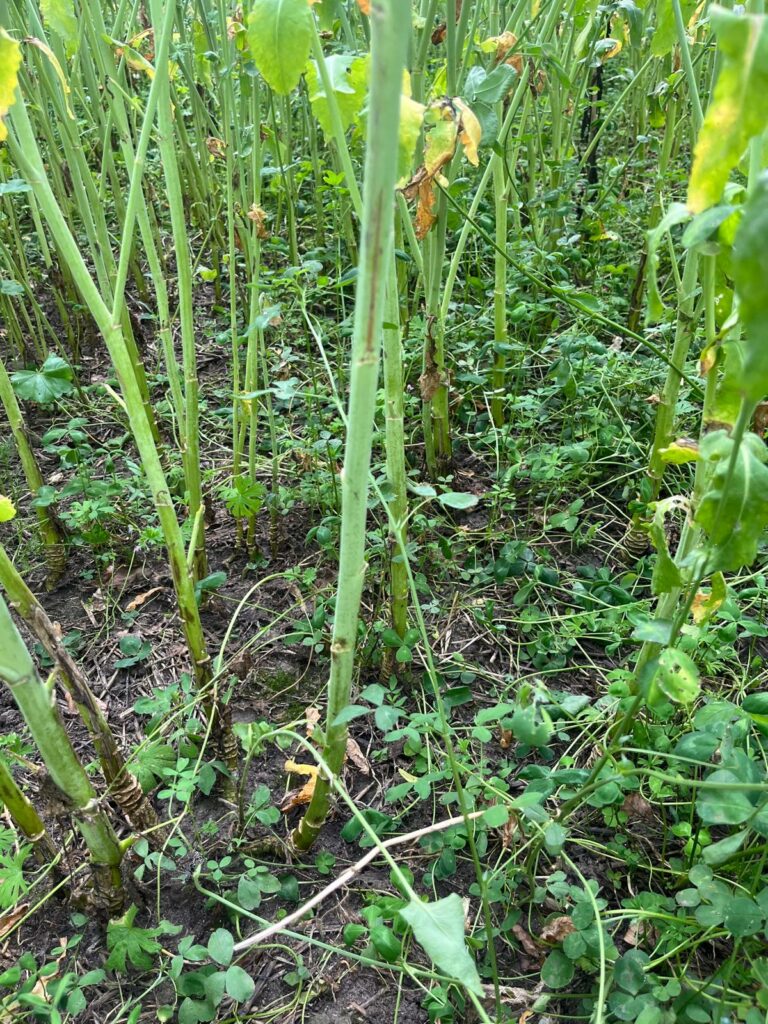
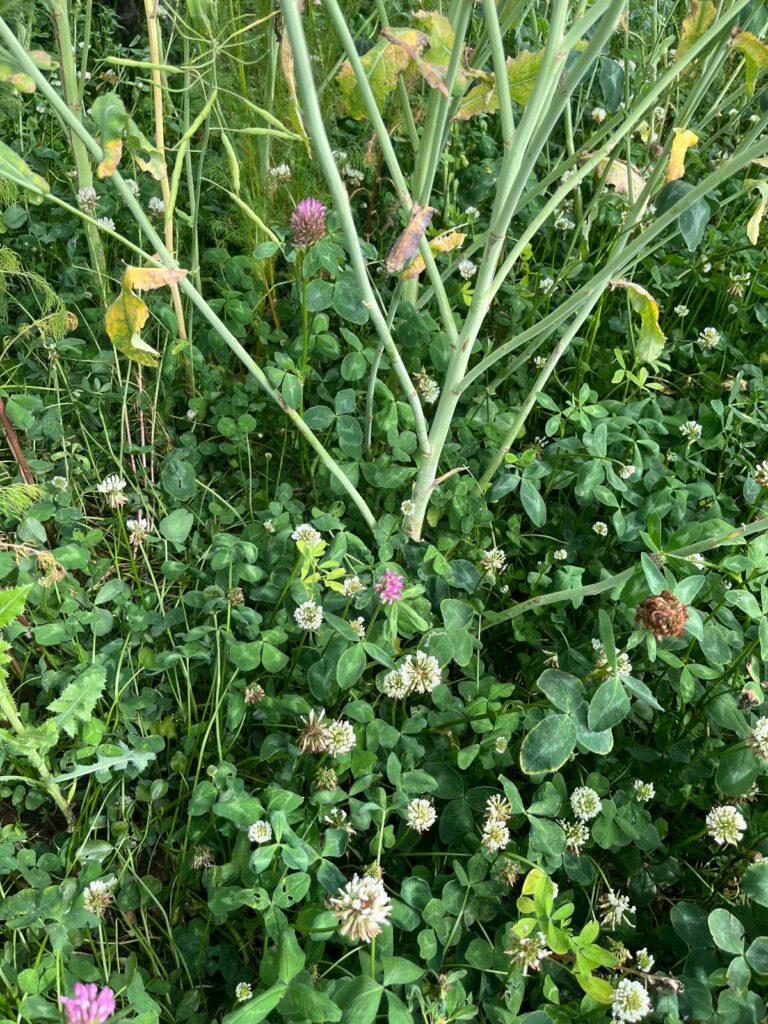
The current big threat/opportunity to farming conditions in Denmark is yet another push for even tighter environmental/nutrient legislation, which will force the profitability of arable farming even lower. This should have a negative farmland pricing but it’s looking like this is further exacerbating the huge gap between the earning potential of farmland and its market value, which seems to keep rising. Many nonfarming entities (government included) are heavily buying up farmland, which pushes the price even higher.
Barløsegaard has been no-ploughing for 25 years this season and with not illage crop establishment for the last 12 years. The majority of the land is what Brits would call boys land, with 1525% clay in a sandy loam clay mixture (almost no silt). The parent material is glacial tilth and our soils are very deep with no bedrock (I think it is at least 800 metres below). Our latitude is at 55.3, which corresponds to slightly north of Newcastle. We’re receiving around 700 mm of annual rainfall and 1800 hours of yearly sunshine.
We have been running our modified Primewest Cross Slot drill for nine seasons now and are really getting comfortable using it for most drilling options. It’s especially great for small seeds and grass/clover because of the advanced depth control and nonhairpinning from the hybrid disc/blade opener. Normally, we want to grow 50% of the farm with winter wheat, 25% with winter OSR and 25% with a spring break crop (faba beans, malting barley, oats). Sometimes we grow grass seed crops, but those are variable in acreage and contract depending. We keep a minor
but healthy population of Italian ryegrass, black grass and rats-tail fescue in some of our fields, so they play an important consideration on the crop management. Our core crop rotation is winter OSR followed by winter wheat, then spring break crop, then winter wheat, then repeat. Wheats are farm-saved feed variety blends of the three to four of the newest top performers selected on high disease tolerance (high untreated yield). OSR are hybrid variety blends of three top performers from distinct breeders with special attention to stem health including verticillium tolerance.
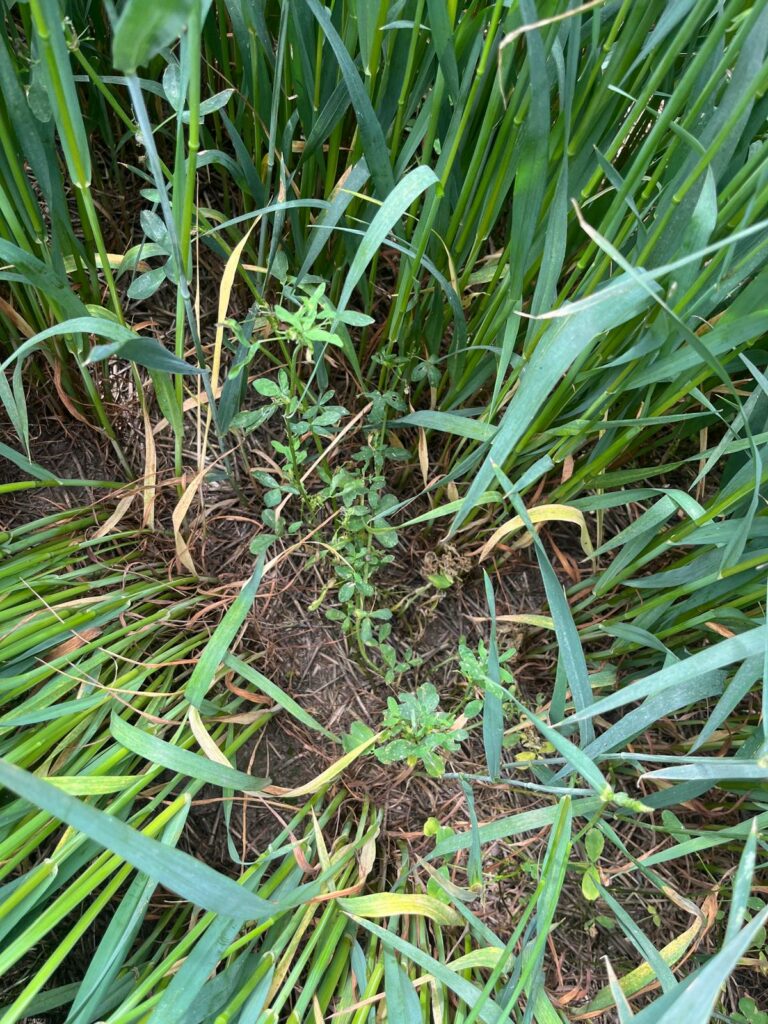
help the lucerne regrow and hopefully make a nice autumn forage cut.
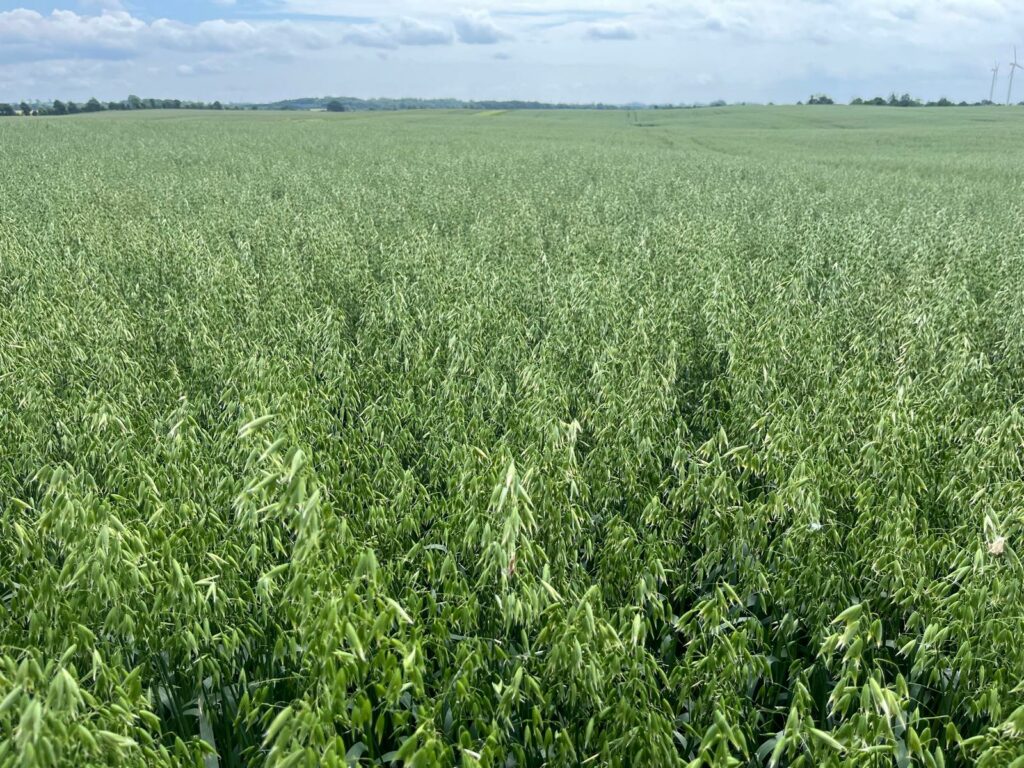
I have recently finished a large soil sampling scheme. Because of our tillage approach, we have a clear nutrient/pH stratification with almost double the amount of phosphate and potassium in the top 10cm of our soils and 0.5 lower pH compared to the 10-20cm interval. We have not limed the soils for 25 years, but this autumn we will apply a baseline of 2 ton/ha of calcium lime with 2.5% magnesium. Afterwards, we will correct the odd sub areas where magnesium might become close to potassium levels. We can also conclude from this sampling that surface applied phosphorus and potassium are useless in our no-till system. Hence, we now apply a modest NPK fertiliser (50% of expected PK grain removal) seed bed placed in the autumn for winter wheat so we only have to apply N and S in the spring for winter wheat and OSR.
March, April and May have been very dry (although we luckily got 100mm of rain in late May), so again we can conclude that large nitrogen doses early on (in mid-March) are preferable to multiple modest split doses going into May. I’m a big believer in using the right type of nitrogen source. We try to avoid nitrate-N and instead prefer urea and ammonium sources. These N-types are safer to apply in large doses early without a leaching risk and they supply nitrogen for a extended period of time. The best part is that they are also the cheapest option. This approach works great together with foliar applied fertiliser (total nitrogen applied for winter wheat is around 180kg/ha with the target yield around 10 ton/ha. We’re still in the early Simplified choice Expertly selected Our expertise and rigorous assessment of both established and new seed varieties enable us to offer you a superior, short-listed selection. We simplify your seed decision process, giving you more t ime to focus on your farm. stages of getting used to foliar feeds at our farm, so we buy the expensive premium solutions from nearby Flex Fertilizer System. This season we have tried 3x 80 kg/ha of a NPKS 16-1-3-1 with 1Mg. (In Denmark we always list nutrient content in raw non-oxidised forms.). They work great together with our fungicide sprays but we have learned that evening and night applications are preferred in order to not burn leaves. Our wheat disease pressure is modest with an long-term average 100kg/ha yield benefit from fungicide control. I try and capture this as economically as possible by applying a T2 fungicide spray at 33%-50% label rate and a T3 at 2533% label rate.
Recently, we have had mixed experience with no-till and min-tilled spring malting barley and this season we have avoided growing spring barley. Instead, we have focused our attention on spring faba beans and winter milling oats.
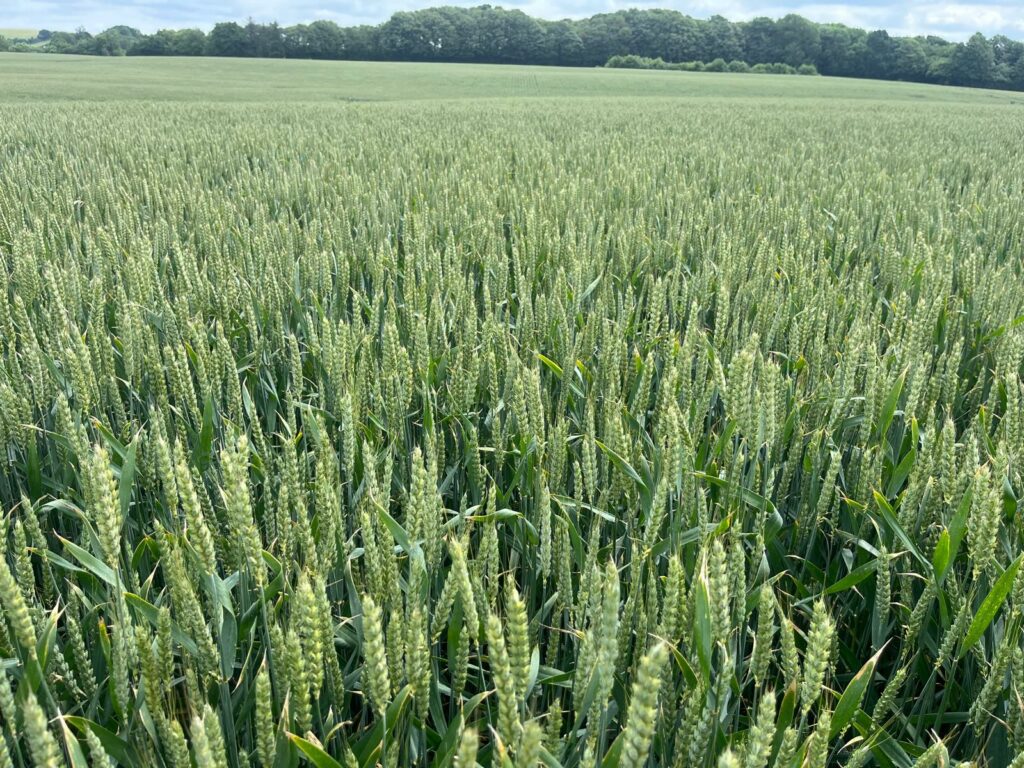
Winter oats are not a common crop in Denmark. I have trialled them on a minor scale for two seasons and this third year we are now growing them commercially in a 25 hectare field. I’m very excited to f ind out their yield.
Winter wheats are currently looking good. I hope that the foliar feeds, with the last one applied at the end of f lowering, will extend will extend grain f ill, keep the wheats green and help them through this current heatwave. One interesting observation has been the visible differences between variety blends from early drilling compared to same variety blend from later drilling. Varieties are more uniform when sown late.
Last autumn, wheat establishment was challenged by herbicide injury (I guess hybris has struck as I’m my own agronomist) and slug grazing. In the future, we’ll apply slug pellets 14 days ahead of our drill and make sure not to spray residual herbicide in warm weather on large wheat seedlings. We’re not doing any exciting cover cropping this summer. I have spent many years trying different approaches but currently we will drill raddish/oat mixture straight after the combine.
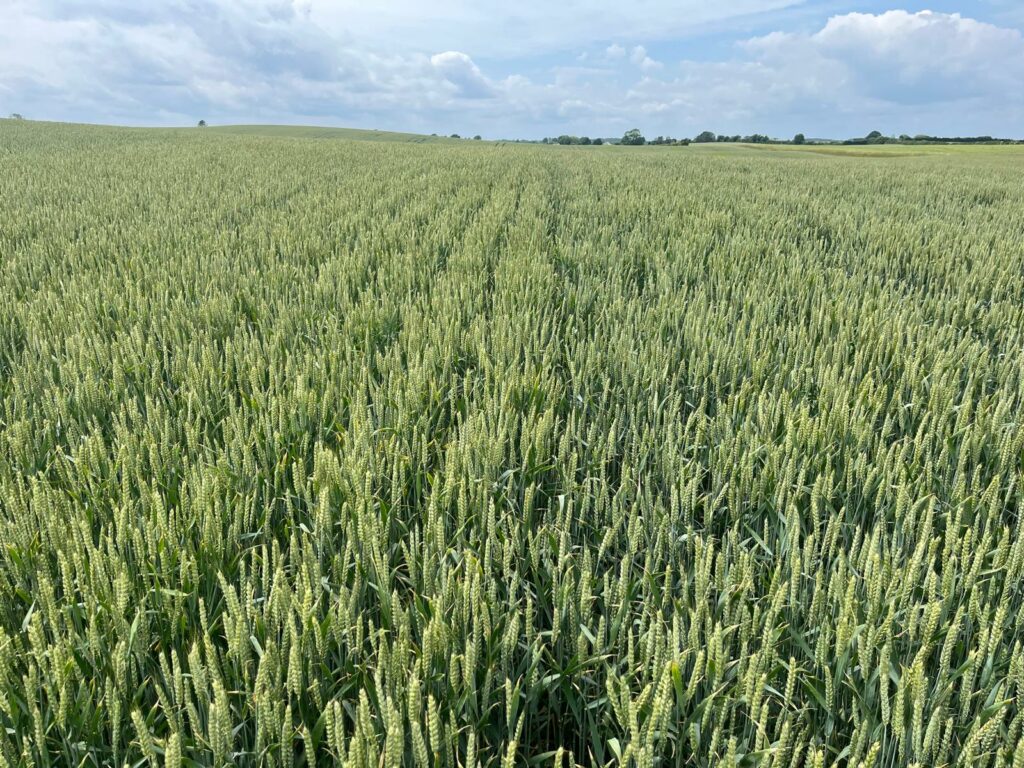
Living mulch adventures
Our current development goal is the ongoing efforts of developing our lucerne-based living mulch farming system. (Use #livingmulch on X to follow my journey.). With this method I hope to develop a reliable mixed farming system with quality forage production, while annually cash cropping 80-100% of my farmland. The core idea is to undersow winter OSR with 25kg/ha lucerne (or a mixture of lucerne, redclover and white clover) in early August. During the first autumn, the legumes will be a free companion crop together with the OSR. We will then take good care not to broadleaf spray the OSR so we have a green bottom of living mulch below at the time of harvest. Then, after the OSR harvest, we will mow the field and living mulch will regrow. We will take a forage cut six to eight weeks later and no-till winter wheat at the end of September. During the wheat crop we will again make sure not to spray out the living mulch. (This will be a fun challenge for your agronomist.). The key is to chemical mow (temporarily stunt) the living mulch in order to make a great wheat crop. Post wheat harvest it’s the same: mowing, regrowth, forage cut, no-till next winter cereal, which this year is winter oats. I hope my winter oats will let my lucerne survive so that this autumn I can take yet another forage cut before reseeding into winter wheat. Furthermore, I’m trying to f it ultra-early-drilled dual-purpose graze and grain winter cereals into the living mulch system, but that is currently very niche. For my next piece in Direct Driller I will know more from this season’s trials and we can take a deep dive into living mulches.
Good harvest to all of you. I’m currently a full-time agronomist with Copenhagen-based Agroganic. Please get in touch if you have any questions or ideas to share and discuss. We can always learn more when working together.
